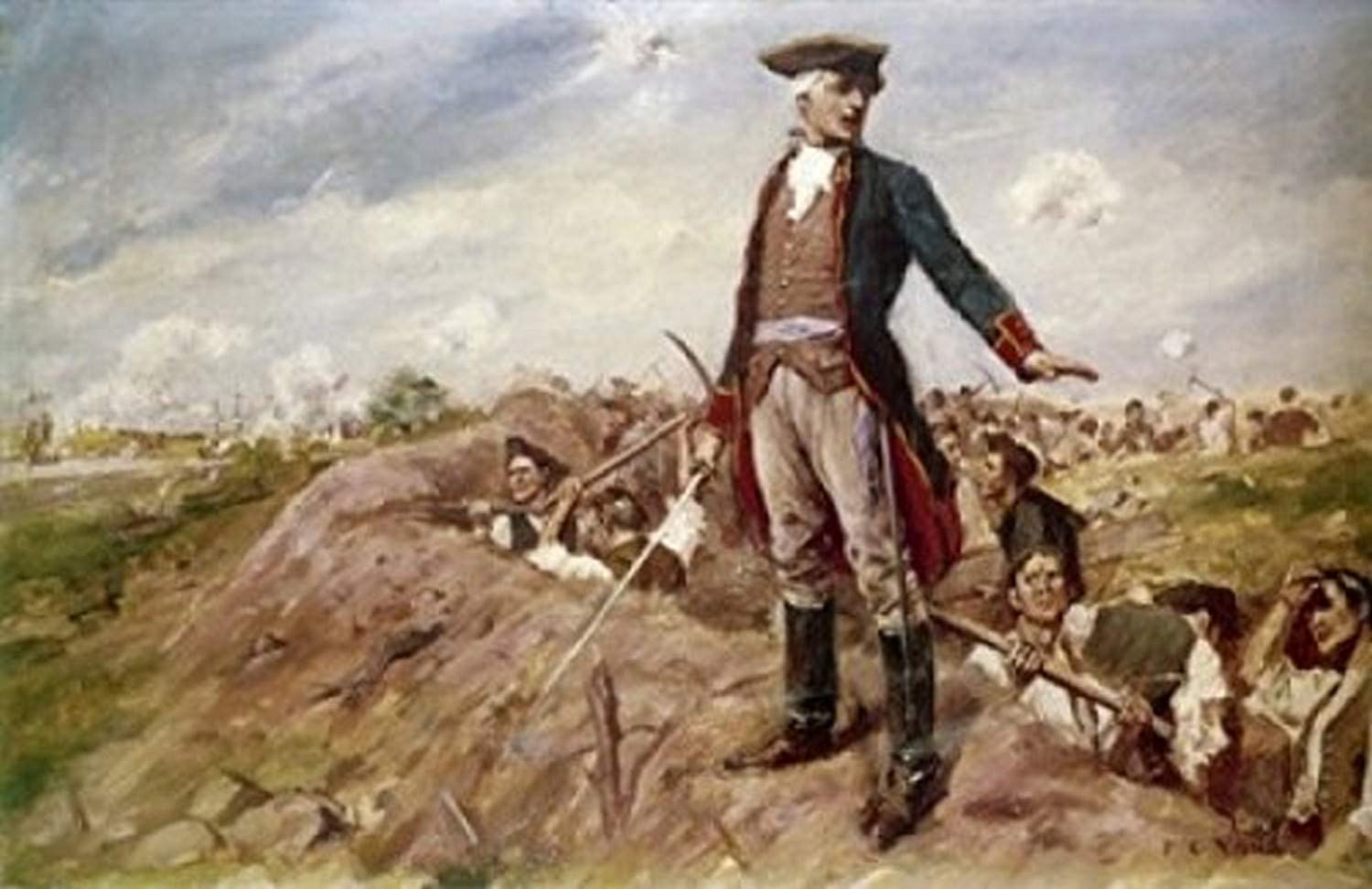About Publications Library Archives
heritagepost.org

Preserving Revolutionary & Civil War History

Preserving Revolutionary & Civil War History

Prescott was born in Groton, Massachusetts to Benjamin Prescott (1696–1738) and Abigail Oliver Prescott (1697–1765). He married Abigail Hale (1733–1821) on April 13, 1758, and they had one son, also named William, in 1762. Prescott owned a house in Pepperell, Massachusetts, on Prescott Street.
Prescott served in the provincial militia in King George’s War where he served in the 1745 Siege of Louisbourg under William Pepperrell. He may have played a role in the naming of the town of Pepperell, Massachusetts after his commander when it was separated from Groton in 1753. In 1755, when the French and Indian War widened, he saw action at the Battle of Fort Beausejour. He turned down an offer to join the Royal Army for his service in that war.
In 1774, when Massachusetts towns began forming militia companies, Prescott was made a colonel commanding the Pepperell company. The alarm that was raised on the evening of April 18, 1775 that British troops were marching on Concord reached Pepperell about 10 am on April 19. Prescott immediately alerted the companies of Pepperell, Hollis, and Groton, and rode toward Concord. The companies arrived too late to participate in the day’s battles, but they became part of the small army that laid siege to Boston afterward.
When the American military commanders were alerted to British plans to capture undefended high ground at Dorchester Heights and Charlestown, Prescott was chosen to lead 1,200 men onto the Charlestown peninsula and erect defenses on Bunker Hill on the night of June 16, 1775. The next day, his troops, which were tired from working to construct a redoubt and other defensive works, and only had limited ammunition, formed the centerpiece of the American defenses when the British attacked the position. In spirited battle, Prescott’s men twice threw back British assaults on the redoubt. When the British made a third attempt, his men were almost out of ammunition; after an initial volley, he ordered a retreat from the redoubt. He was one of the last men to leave the redoubt, parrying bayonet thrusts with his ceremonial saber. While the British successfully captured Bunker Hill, the poorly-organized colonial forces inflicted significant casualties, and the British were unable to capitalize on their victory; Prescott is widely seen as having played a key role in the battle, keeping the relatively poorly-trained militia under his command well-disciplined.
When the Second Continental Congress established the Continental Army it sent George Washington to take command of the forces besieging Boston. Prescott received a colonel’s commission, and his unit became the 7th Continental Regiment. The regiment saw service in the 1776 defense of New York. While he appears to have given up command of the regiment after that campaign, he apparently participated in some capacity in the 1777 Saratoga campaign, for he is depicted in the painting of the Surrender of General Burgoyne at Saratoga by John Trumbull,[1][2] which hangs in the U.S. Capitol Rotunda. His departure from military service may be due to injuries sustained in a accident on his farm.
Prescott served in the Massachusetts General Court in later years, and served in militia called out to suppress the Shays’ Rebellion in 1786. He died in 1795.
His grandson William H. Prescott was a noted historian and author, who married the granddaughter of Captain John Linzee, captain of the HMS Falcon, one of the British ships that fired on Bunker Hill.
The former town of Prescott, Massachusetts, was named in his honor. The town was disincorporated in 1938 as part of the building of the Quabbin Reservoir, and the land now makes up Prescott Peninsula, which divides the main branches of the reservoir.
Prescott’s likeness was made into a statue for a memorial for the Battle of Bunker Hill.
Prescott’s house is located in North Pepperell, Massachusetts.